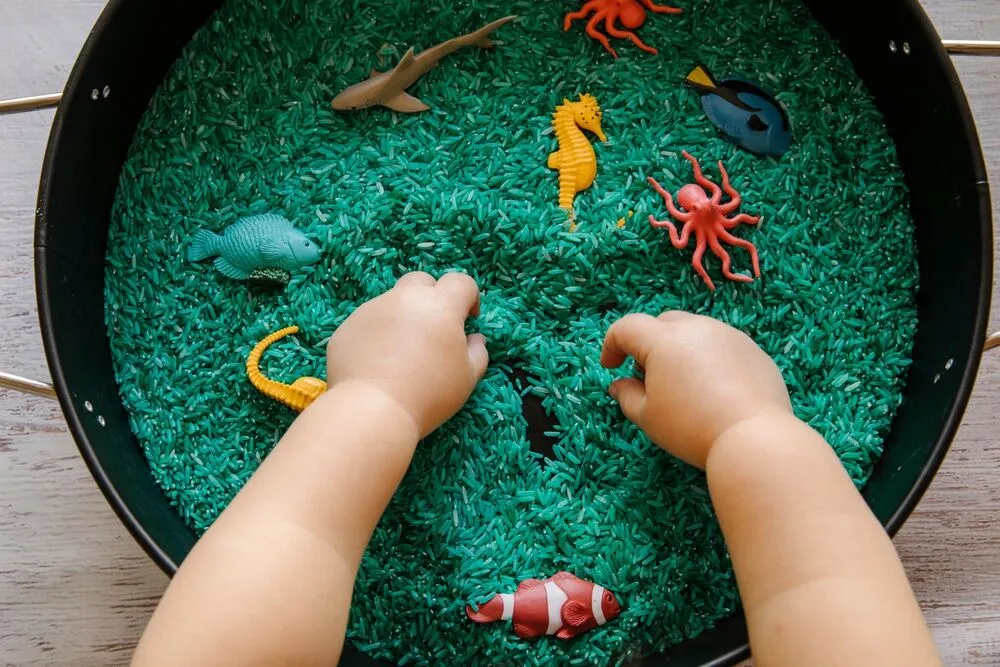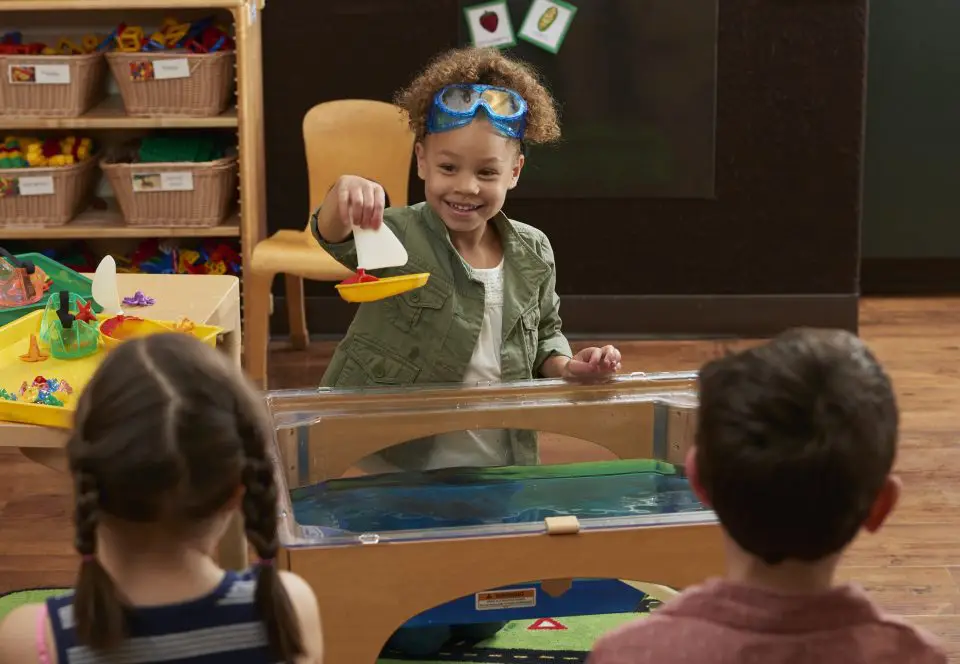Diving into engaging activities can work wonders for your child’s growth. These playful experiences ignite curiosity and significantly enhance cognitive development.
When children engage in play, they explore and learn through tactile experiences, which not only makes learning enjoyable but also bolsters their motor skills.
Are you excited to witness your little one flourish? Begin by choosing activities tailored to their age and interests.
Simple options, such as playing with sand or water, create excellent opportunities for sensory integration and pave the way for deeper learning.
Understanding Sensory Integration For Development
Have you ever thought about how our senses influence the way we learn and develop? When different senses come together to help us process information, they create a fascinating world of exploration. This multisensory approach is especially important for children as they navigate their surroundings.
Engaging in sensory activities enhances their ability to absorb knowledge and respond to the world.
For instance, a splash of visual stimulation during play can ignite their creativity, while auditory processing encourages better communication skills.
By focusing on sensory integration, we open doors to enriching experiences that bolster children’s growth and learning potential.
As we explore the connections between sensory activities and cognitive growth, it’s clear how these experiences lay the groundwork for our next topic: How Playbased Learning Enhances Growth. Incorporating sensory exploration into playtime naturally flows into the benefits of play-based learning, showing how visual stimulation and auditory processing within a multisensory approach can enhance brain development through active exploration.
How Play-based Learning Enhances Growth?
Isn’t it amazing how kids’ faces light up when they dive into playful activities? That pure joy becomes a powerful tool, turning learning into a delightful adventure. Creative play is a fabulous way to engage young minds, allowing them to explore and grow without even realizing it.
When children participate in imaginative play, they exercise their problem-solving abilities while using their fine motor activities like building blocks or crafting.
Not only do these activities entertain, but they also build skills that are foundational for future learning.
Even something as simple as sensory bins can elevate an ordinary day into an extraordinary journey of discovery. This hands-on approach not only promotes mindfulness but also encourages exploration and curiosity about the world around them. With each playful experience, kids embark on an exciting path of learning and growth through fine motor activities, sensory bins, creative play, mindfulness, and imaginative play.
| Activity Type | Benefits |
|---|---|
| Imaginative Play | Enhances problem-solving skills |
| Fine Motor Activities | Develops foundational skills for future learning |
| Sensory Bins | Encourages exploration and curiosity |
| Creative Play | Transforms learning into a delightful adventure |
The Role Of Tactile Experiences In Learning
Diving into hands-on activities opens up a world of possibilities for our skills. Engaging with different textures provides wonderful proprioceptive input, enhancing how children perceive their environment.
As kids touch and manipulate materials, they not only improve their spatial awareness but also hone fine motor skills.
This approach to learning creates a sense of engagement that really resonates.
Think about activities like sculpting with clay or constructing with blocks; these experiences spark creativity while also sharpening problem-solving abilities. Through exploration and experimentation, learners forge connections that truly stick. Let’s carry this momentum forward and explore how incorporating visual stimulation techniques can elevate learning even further by enhancing proprioceptive input, boosting spatial awareness, increasing engagement, facilitating hands-on learning, and fostering effective problem-solving.
Engaging In Visual Stimulation Techniques
Think of the ways our surroundings can dynamically affect how we learn. Engaging visuals serve as a powerful tool for enhancing cognitive flexibility.
When we incorporate sensory-rich environments, curiosity ignites, inviting a more profound engagement with the material.
Bright colors and dynamic imagery significantly influence how we absorb and process information.
Consider interactive activities, such as employing charts or infographics. These tools elevate a mundane lesson into an immersive experience, allowing learners to focus better and retain knowledge longer.
What types of visuals resonate most with your audience? Whether it’s videos or vibrant displays, customizing these elements to suit your learners can greatly enhance inquiry-based learning. As we explore different modalities, transitioning from tactile experiences into auditory processing through activities can further enrich the learning journey
Visual Learning
- Engaging visuals can enhance cognitive flexibility and deepen material engagement.
- Bright colors and dynamic imagery significantly improve information absorption and processing.
- Interactive tools like charts and infographics transform lessons into immersive experiences.
- Customizing visual elements to suit learners can enhance inquiry-based learning outcomes.
Promoting Auditory Processing Through Activities
There’s a world of fun waiting to enhance your listening skills! Engaging with music is a delightful way to get started. Singing or playing instruments not only brings joy but also supports your brain’s neuroplasticity.
You can easily weave music into your daily routines—imagine sing-alongs during car rides or family jam sessions at home.
Another exciting avenue to nurture auditory skills involves listening games.
Games like Simon Says make listening active and enjoyable.
You can create DIY listening activities using everyday sounds—like guessing the source of a sound or following sound sequences. These experiences spark curiosity and keep the learning process exhilarating! Transitioning from music and games, why not also explore multisensory approaches to learning? Mixing in visual stimulation can enhance the overall experience and take your auditory adventures to the next level.
Exploring Multi-sensory Approaches To Learning
Picture a classroom where students are not just passive recipients of information but vibrant participants in their own journey. Engaging various senses can really enhance how we process and understand information.
This method taps into different learning styles, allowing individuals to connect with material on a deeper level.
When learners experience knowledge through sound, touch, and sight, it strengthens their brain function significantly.
Traditional approaches might leave some feeling uninspired, but blending different sensory pathways can make education feel exciting. Think about the fun of hands-on activities or interactive games; these enrichment activities transform lessons into memorable adventures, helping to keep attention spans sharpened and minds eager to explore.
This really sets the stage for growth as we transition from promoting auditory processing through activities to unraveling the benefits of fine motor activities for children.
Benefits Of Fine Motor Activities For Children
Engaging kids in hands-on tasks can really make a difference in their development. These activities support cognitive growth, helping to sharpen their little minds as they play.
When they stack blocks or manipulate small toys, they’re not just entertained; they’re also enhancing their problem-solving skills.
Just picture how deeply focused they get while working on a puzzle or stringing beads—it’s a delightful way for children to find a sense of calmness while boosting their focus and creativity.
Incorporating activities like clay crafting or gardening allows for creative expression and the joy of discovery, all while developing vital motor skills.
These experiences strengthen their dexterity and spark their imaginations, making every moment feel like an adventure.
Emphasizing early childhood education fosters an environment where children can navigate sensory overload, cultivating calmness through creative expression and encouraging a lifelong journey of discovery.
Fostering Curiosity And Exploration In Kids
Imagine a world where every question a child asks sparks an adventure. This kind of wonder is so important because it opens up endless opportunities for exploration.
When little ones dive into new experiences, they develop adaptive skills that enhance their understanding of the vast world around them.
Creating spaces where they can freely explore not only nurtures their curiosity but also fosters cognitive enhancement.
Engaging them in simple activities like sensory play boosts their development in wonderful ways. Encouraging questions fuels their natural drive to learn and helps sharpen their focus. So, let’s explore how we can create environments that truly inspire this delightful curiosity by enhancing cognitive abilities, sharpening perceptual skills, fostering self-regulation, improving focus, and developing adaptive skills.
- Children who engage in exploratory play are more likely to develop critical thinking skills.
- Research shows that sensory play can enhance brain development and improve cognitive skills.
- Encouraging questions in children promotes a growth mindset and a lifelong love of learning.
- Creating stimulating environments can significantly improve focus and self-regulation in young learners.
Conclusion
Reflecting on the journey of nurturing curiosity in your little one is truly rewarding. Each moment spent together opens doors to delightful learning experiences.
We’ve explored how exploratory play is fundamental to development, as it fosters creativity and encourages brain stimulation.
Simple activities can work wonders, promoting critical thinking in an enjoyable manner.
Keep an eye on how your child’s behavior modulation varies with different games; it’ll help you tailor their adventures. How can you spark more engaging moments? What fresh explorations can you embark on together today that promote behavior modulation through exploratory play, incorporate educational games for critical thinking, and stimulate the brain?.
Originally posted 2025-03-21 12:29:39.




